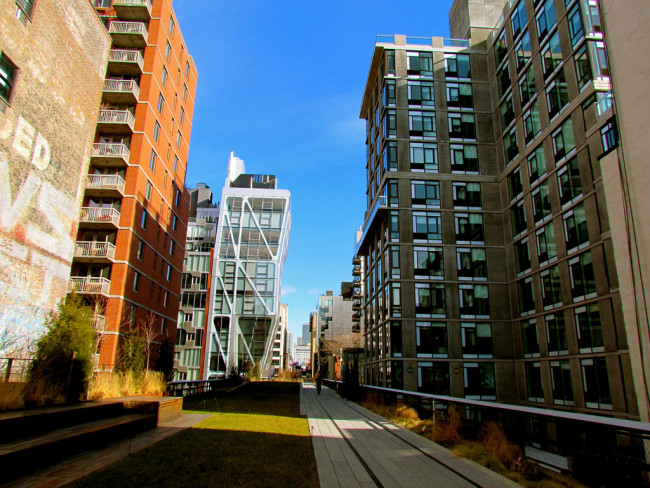Why is there a photo of a water heater in this single-family listing?
If you've ever perused listings for single- or multi-family buildings, after scrolling through the lovely photos of the interior, and perhaps an outdoor space, you may have come across less-than-Instagram-friendly images of utterly practical items in the basement such as the building's boiler and water heater, an electrical service panel (also referred to as a "breaker box"), etc. These essential items are referred to as the building's "mechanicals," and they are responsible for keeping you comfortable in any number of ways—heat, hot water, light, sometimes a cooling system, etc.
Sometimes these elements are in a separate area from a finished basement, other times, they are in a dank corner of a level with only concrete walls and floor. (Occasionally, this image is one of only two provided, with the other being a street view of the structure. Unless you're a skilled contractor or developer, you probably want to steer clear of places like those.)
Still: Why do real estate listings include these photos? Obviously, not for aesthetic value. And what should you be looking for when you see a photo of building's mechanicals? We had no idea, so we asked around.
There are a few reasons why you might come across photos of hulking gray tanks or beige boxes in basements.
First off, it shows good faith, or, at the very least, the appearance of good faith. (We suppose it depends on how cynical you are.) But on the surface it reads, "We've got nothing to hide. We're showing you everything."
If a house has been recently renovated, and the listing says so (it usually does), it probably also mentions "new mechanicals." So an agent or seller may want to offer proof of those upgrades. As Elizabeth Kohen, owner of Garfield Realty points out, "They might also be conveying that the house has been converted from oil to gas."
Multi-family scenario
Looking at a building with more than one apartment? That basement photo might be indicating a key feature of the mechanicals' setup. "It also shows that, in a multi-family, the tenant will have their own utilities and not 'share' with the owners. In situations like the latter—the tenant is never sure that they aren't at least in part paying for the owner's (or other tenants') usage, as they're sharing the same water heater," says Marie Bromberg of Compass. "The landlord that takes the time to separate the utilities is trying to do the right thing, and that's always positive." (It also indicates that as the owner, you're not paying for your tenants' long, hot, showers.)
Multiple electric meters reflect the same division of use (and cost) by apartment.
Flood-ready
If you're looking at a house in a flood zone (or in an area in danger of flooding), these photos might be showing you that the mechanicals have been raised up in an effort to prevent damage in the event of flood. (Post Hurricane Sandy, many buildings, from single-families to sky-high condos, elevated building mechanicals—some by feet, some by floors.)
A look under the hood
Finally, listing agents give prospective buyers a look at the mechanicals of a house because if you inherit some lemons with the building, you're going to incur some (not insignificant) additional costs. Providing photos is an attempt to show that the key components for utilities are in good shape.
“Typically, a townhouse listing would include images of the building mechanicals to give potential buyers a level of comfort with their condition. Ensuring these systems are in good working order is generally the buyer’s responsibility and it could delay the closing process if potential issues are not disclosed,” says Bill Cunningham, president of sales at Corcoran.
"These are expensive—and important—systems that literally make the home habitable," says Vittorio Faricelli, a Citi Habitats agent who has sold numerous single-family houses in the Williamsburg area. "Think of them as the engine to your car. Buying a home with an old, unreliable furnace is like buying a fully-loaded Mercedes with a bad engine. They might not be status symbols like marble floors, designer appliances, or huge soaking tubs. But these systems are what provide heat, hot water, etc.—all the creature comforts we take for granted will work—and as a single-family homeowner, items for which you are solely responsible. If it breaks, it’s your problem."
Of course, you can only tell so much from a photo. (If you do decide to go look at a house, it's always a good idea to check out the mechanicals up close, note any brand names and model numbers, and do a little due diligence on them: how old are they, any issues with specific models, etc. If you make it to the inspection phase, you should have your inspector evaluate the mechanicals' condition as well.)
Help seal the deal
And, don't forget: A real estate listing is essentially an ad, and tacking on a photo of some good-looking mechanicals can be yet another small detail that helps prime the pump for a sale. "Including them can accelerate the sales process," says Faricelli. "If buyers can already see that the systems seem in good shape and they love what they see in the pictures, they can start to formulate offers ahead of time which is a benefit to all parties."



























